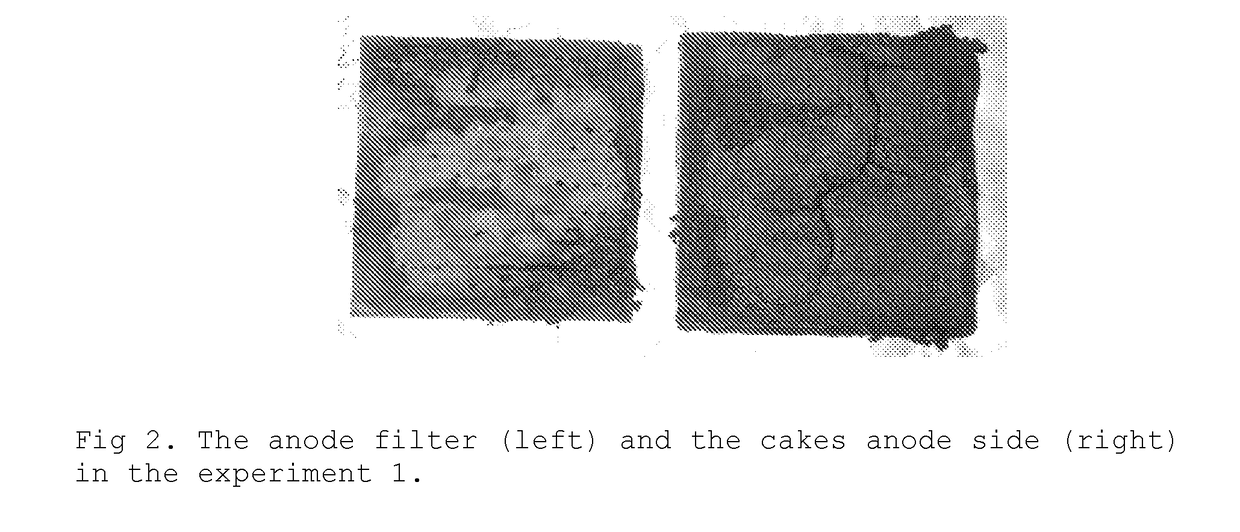A method of purifying lignin by subjecting a slurry comprising lignin to an electric field
a technology of electric field and lignin, which is applied in the direction of lignin derivatives, separation processes, filtration separation, etc., can solve the problems of increasing costs, reducing yield, and removing lignin, so as to improve the purification effect and increase the water extraction ra
- Summary
- Abstract
- Description
- Claims
- Application Information
AI Technical Summary
Benefits of technology
Problems solved by technology
Method used
Image
Examples
examples
[0071]The lignin was obtained from a LignoBoost™ type of process and contained about 1.04% ash when determined at 550° C.
experiment 1
[0072]Dry lignin powder was ground in a mortar and 30 g of the powder was mixed with 30 ml of distilled water. After light shaking it was a liquid substance. 20 g of this mixture was placed into the dewatering cell, and the pressure was 650 Pa. Filter paper was used in the bottom. For the first 5 min. there was free dewatering monitored, no water emerged. At 5 min. moment 97 V voltage was applied, only very slow water outflow was present. The current was strong at the beginning, but it fell sharply after about 3 min. At 12.5 min. 20 ml of water was added over the anode, this was followed by the sharp increase of the electric current and very quick water outflow. Later water was added three times more, the outflow was very quick after each addition. The results are in FIG. 1. At 20 min. water vapor was emerging through the cathode. The experiment was ended after 22.5 min.; the sample of the water collected was taken. The mass of the cake was 16.2 g, the cake was with big cracks (FIG....
experiment 2
[0073]The 3:5 mixture of the Lignin powder and water was prepared similarly as in experiment 1. To avoid crack formation the experiment was ended shortly after the current fell to low value. Water was not added. Only small amount of water was collected. The cake was soft on the anode side but hard and with cracks on the cathode side. The mass of the cake was about 19 g.
PUM
| Property | Measurement | Unit |
|---|---|---|
| Temperature | aaaaa | aaaaa |
| Temperature | aaaaa | aaaaa |
| Temperature | aaaaa | aaaaa |
Abstract
Description
Claims
Application Information
 Login to View More
Login to View More - R&D
- Intellectual Property
- Life Sciences
- Materials
- Tech Scout
- Unparalleled Data Quality
- Higher Quality Content
- 60% Fewer Hallucinations
Browse by: Latest US Patents, China's latest patents, Technical Efficacy Thesaurus, Application Domain, Technology Topic, Popular Technical Reports.
© 2025 PatSnap. All rights reserved.Legal|Privacy policy|Modern Slavery Act Transparency Statement|Sitemap|About US| Contact US: help@patsnap.com



